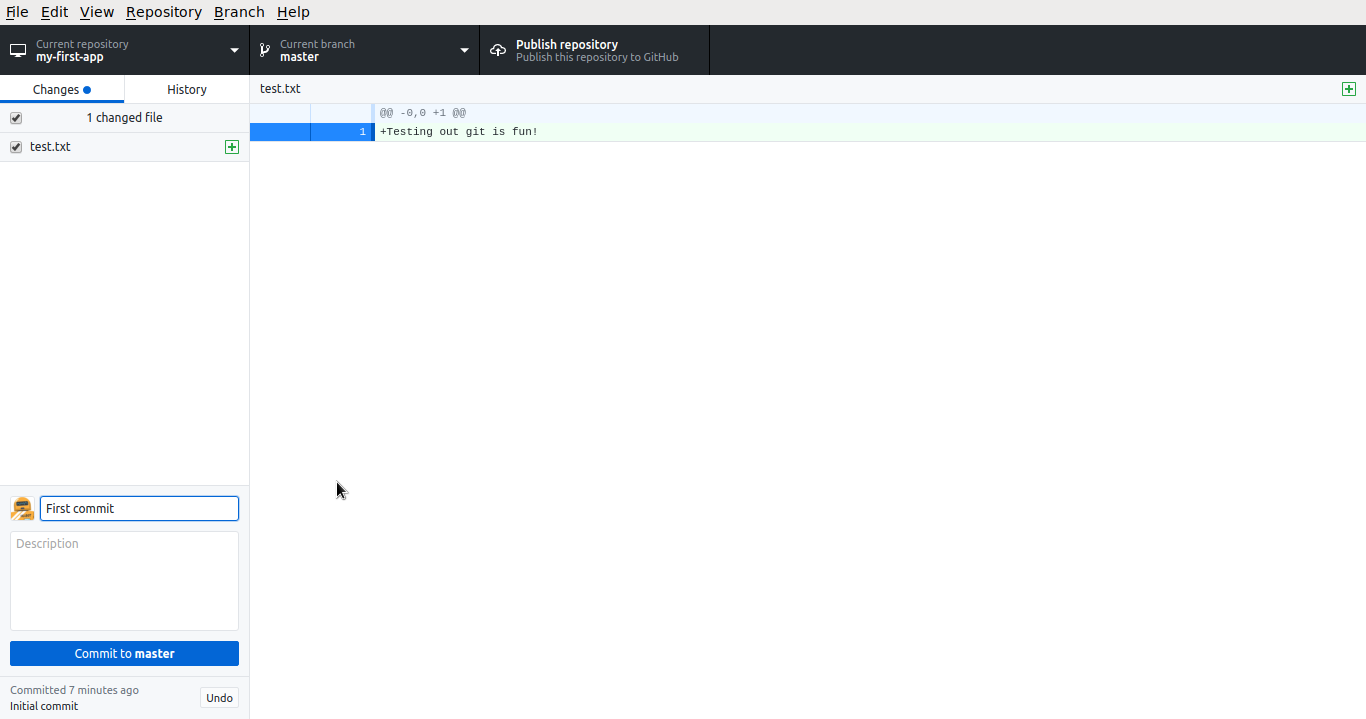

- GITHUB VIEW COMMIT HISTORY PATCH
- GITHUB VIEW COMMIT HISTORY FULL
- GITHUB VIEW COMMIT HISTORY PORTABLE
Those blobs are referenced by a tree, and that tree is referenced by the commit.Īs you make changes to your files and create new commits, Git identifies the changed files and applies a new SHA-1 hash to the file, while unchanged files retain their existing SHA-1 hash. The files compressed in the snapshot are each given a unique SHA-1 hash-referred to as blobs. Each snapshot contains a lot of information. When we previously discussed commits, we identified them as snapshots of your project.

oneline or -patch can be used.After completing this unit, you’ll be able to: O commit 2369465 (origin/master, origin/HEAD)
GITHUB VIEW COMMIT HISTORY PORTABLE
Here's my portable solution (shell script which works on Windows too without additional install) which shows the differences from origin for all branches: git-fetch-logĪn example output: = branch If you want to see how many commit your local branches are ahead/behind compared to the branch you are pushing to: git for-each-ref -format="%(refname:short) %(push:track)" refs/heads
GITHUB VIEW COMMIT HISTORY PATCH
Just as we have " %(upstream)" to report the " for each ref, this patch adds " %(push)" to match " supports the same tracking format modifiers as upstream (because you may want to know, for example, which branches have commits to push).
GITHUB VIEW COMMIT HISTORY FULL
With this patch, you can just do: git rebase than typing out the full name.Ĭommit 29bc885 adds: for-each-ref: accept " %(push)" format You may push to your fork from multiple machines, requiring you to integrate the changes from the push destination, rather than upstream. Pushed yet: git log as a more complicated example, imagine that you normally pull changes from origin/master (which you set as your and push changes to your fork (e.g., as myfork/topic). There isn't a shorthand for the latter, but it's useful to have.įor instance, you may want to know which commits you haven't In a triangular workflow, each branch may have two distinct points of interest: the that you normally pull from, and the destination that you normally push to. (Merged by Junio C Hamano - gitster - in commit c4a8354, )Ĭommit adfe5d0 explains: sha1_name: implement shorthand

Git 2.5+ (Q2 2015) introduces a new shortcut for that: commit 29bc885, commit 3dbe9db, commit adfe5d0, commit 48c5847, commit a1ad0eb, commit e291c75, commit 979cb24, commit 1ca41a1, commit 3a429d0, commit a9f9f8c, commit 8770e6f, commit da66b27, commit f052154, commit 9e3751d, commit ee2499f, and commit e41bf35 by Jeff King ( peff). The branch at the remote can be, again, origin/xxx or even anotherUpstreamRepo/yyy. It is that remote-tracking branch that counts when seeking unpushed commits: the one that tracks the branch at the remote where the local branch would be pushed to. Those are set by branch.*.pushremote for the current branch along with the global remote.pushDefault value. The upstream branch for master might be origin/master, but it could push to the remote tracking branch origin/xxx or even anotherUpstreamRepo/yyy. All the other answers talk about "upstream" (the branch you pull from).īut a local branch can push to a different branch than the one it pulls from.Ī master might not push to the remote-tracking branch " origin/master".


 0 kommentar(er)
0 kommentar(er)
